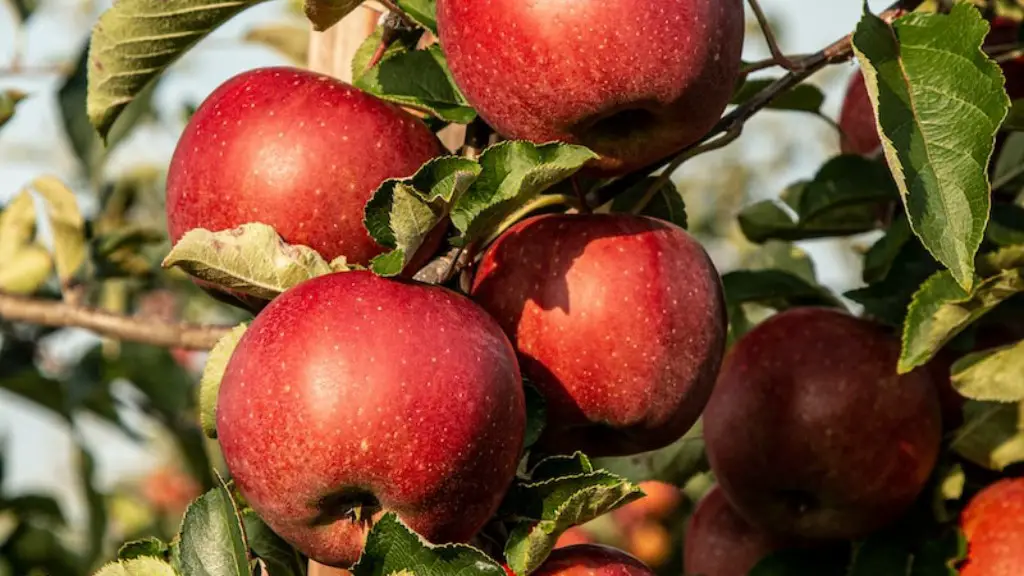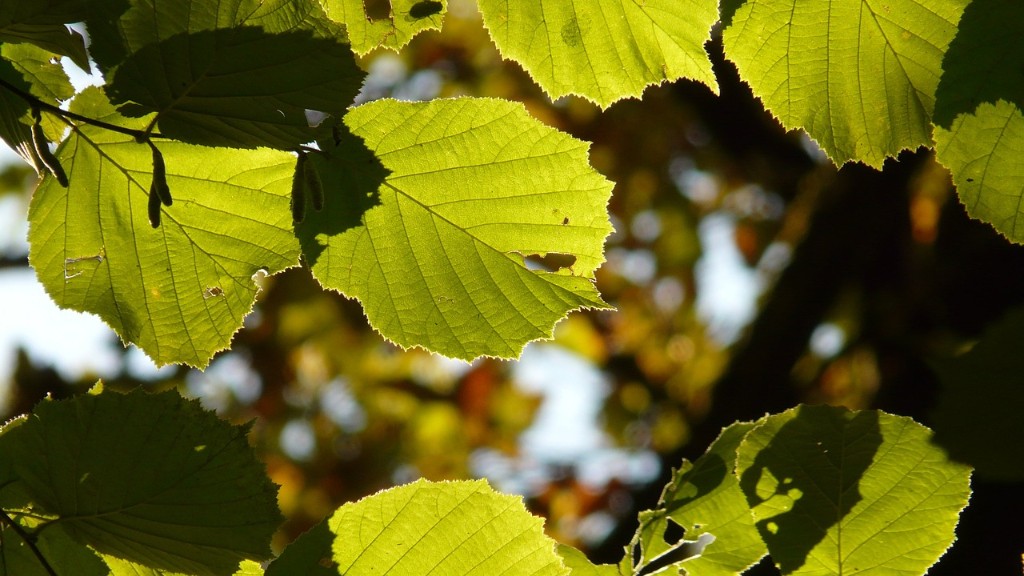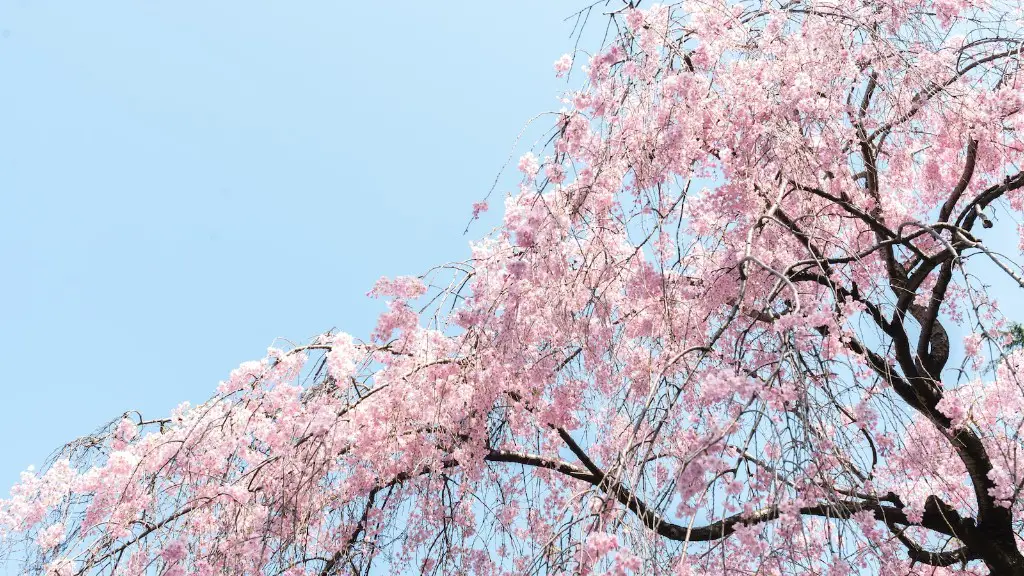Whiteflies are a nuisance to many gardeners, particularly those growing lemon trees. The pest can be difficult to get rid of, but luckily, there are some steps that can be taken to help curb its presence. Here’s how to get rid of white fly on lemon trees:
First, identify the whitefly presence. The whitefly is a small, white insect that looks like a tiny moth. They often hang around the undersides of leaves, where they can feed on plant cells and breed. Once the presence has been confirmed, determine the extent of the outbreak and create a plan to address it.
The next step is to employ biological controls. Damaging the population of whiteflies in a lemon tree can be accomplished by introducing their natural enemies, such as certain species of lady beetles and lacewings, which consume whitefly larvae. It’s also possible to introduce predatory mites to the affected lemon tree. These natural methods of pest control can be incredibly effective but come with the potential of having downstream effects on the ecosystem, so they should be used cautiously.
Another option to help mitigate the presence of whiteflies is to use insecticidal soaps. These soaps work by directly attacking the insect, disrupting their outer coating, and dehydrating their bodies. However, when using this type of spray, be sure to read the label for specific guidelines on application, as some insecticidal soaps can be mildly toxic to plants.
Lastly, it’s important to note that whiteflies are prone to becoming resistant to chemical sprays. To minimize the chances of this happening, use only the most effective control agents available, and make sure that they’re rotated properly. Additionally, pay close attention to the instructions on the pest control product packaging, particularly regarding environmental safety.
Prune Affected Leaves and Branches
One way to reduce the population of whiteflies in a lemon tree is to prune away affected leaves and branches. By removing leaves and branches infested with whitefly larvae, you can reduce their population and aid in the control of whiteflies. It’s important to note, however, that this process can be time-consuming, and it’s not a long-term solution.
For the best results, begin pruning from the bottom of the infested plant, slowly working your way up to the leaves and branches that show the most signs of whitefly infestation. This process is best done when the tree is not under direct sunlight and with clean, disinfected tools. Doing this ensures that no pests are spread from one plant to the next. Additionally, it is important to not overwater the lemon tree, as too much moisture can create ideal conditions for whitefly larvae to thrive.
When all affected leaves and branches have been removed, dispose of them in a sealed plastic bag. This will help ensure that any existing larvae can’t spread to other plants. Additionally, be sure to disinfect any gardening tools used in the process with a solution of bleach and water.
Work to Enhance The Plant’s Resistance
The whitefly is an incredibly resilient pest, so it’s important to work on building up the defenses of the lemon tree. This can be done by ensuring that it is planted in a well-draining, nutrient-rich soil, as this will provide an environment where the tree can build up its natural defenses. Additionally, controlling the levels of weeds and other pests near the tree can help reduce their ability to spread to the lemon tree.
It’s also important to practice routine pruning, as this opens the plant up to greater light and air circulation, both of which can serve to reduce the infestation. Additionally, proper ventilation and humidity should also be addressed if possible. Finally, monitor the lemon tree for any signs of pest activity and respond quickly if whiteflies are spotted.
Keep an Eye Out for Natural Enemies
Another way to reduce the presence of whiteflies is to look for their natural enemies. These include ladybugs, lacewings, and parasitic wasps, all of which prey on whitefly larvae. If possible, simply add these beneficial insects and predators to the lemon tree in order to increase their population and reduce the whitefly presence.
In addition, you can also use biological control agents, such as Bacillus thuringiensis or fungi, to attack the whitefly population in your lemon tree. This is the safest and most effective method of controlling whiteflies and should be employed where possible. Additionally, insecticidal sprays can be used if other methods prove unsuccessful.
Remove Any Egg Clumps
It’s also important to keep an eye out for egg clumps on the underside of the leaves. These are white and can be removed with a cotton swab soaked in rubbing alcohol. Additionally, destroying affected leaves and branches can help reduce the overall population of whiteflies in a lemon tree.
In summary, whiteflies are a nuisance pest that can be difficult to control. Though there are chemical solutions available, these are often not as effective as natural methods such as releasing beneficial predators or using insecticidal soaps. It’s also important to prune away affected leaves and branches, as well as to reduce the presence of weeds and other pests around the tree. Finally, it’s important to practice routine monitoring, as this can help catch any signs of whitefly presence quickly and effectively.
Conduct Regular Inspections
Finally, it’s important to regularly inspect your lemon tree for any signs of whitefly infestation. This should ideally be done every two weeks, as whiteflies can spread quickly and do best in moist, shady areas. Any signs of pest activity should be addressed quickly and thoroughly. Furthermore, keeping an eye on the overall health of your lemon tree will help ensure that it’s not vulnerable to future infestations.
All in all, whiteflies can be a nuisance pest when it comes to lemon trees. But by following some of the methods outlined above, you can successfully reduce and control the population of these pesky insects. With some patience and dedication, it’s possible to get rid of white flies and enjoy a healthy lemon tree for years to come.
Use Environmental Protection Measures
It is important to keep in mind that any insecticide used in the fight against whitefly pests should be done so with proper safety measures in mind. This includes proper use of protective clothing, such as long sleeves and gloves, as well as a face mask or respirator to protect against any chemical vapors. Additionally, any pesticide-infested debris should be removed and disposed of properly to avoid attracting further pests.
In addition, it is important that the pesticide is applied correctly to the affected area. This means carefully applying the pesticide only to the affected plants, paying special attention to the undersides of leaves to ensure that all whiteflies are exposed to the pesticide. It is best to avoid spraying the plant when it is in direct sunlight and be sure to read any directions associated with the insecticide before use.
It is also important to note that any insecticide used should be rotated to avoid the build-up of chemical resistance in whiteflies. Additionally, any standing water should be reduced as this is a favorable breeding ground condition for the pests. Overall, taking proper precautions and using the appropriate methods can help reduce the presence of whiteflies in a lemon tree.
Invite Natural Predators Into The Area
In addition to using insecticides, it is also useful to invite natural predators into the area. These include species such as ladybugs, lacewings, and parasitic wasps which all prey on the larvae of whiteflies. To attract these predators, plant flowering plants and herbs in the area, which can provide food sources for the beneficial insects. Additionally, providing access to water is also important, as this is essential for the survival of some species.
In addition, it is also helpful to ensure that weeds and other pest species do not take up residence in the same area. If other pests are present, they may feed off of the whiteflies and ultimately reduce the population of natural predators in the lemon tree. Ultimately, by allowing nature to take its course, it is possible to create an ecosystem where natural predators can thrive and help reduce the presence of whiteflies.
All said, controlling whiteflies on lemon trees can be a challenge. However, with the proper steps and methods, it is possible to successfully reduce and eliminate the whitefly population. Pruning affected branches and leaves, introducing natural predators, and using proper environmental protection measures can all help reduce the whitefly presence in a lemon tree. With the right approach and dedication, you’ll be able to get rid of whiteflies and enjoy a healthy, fruitful tree.




